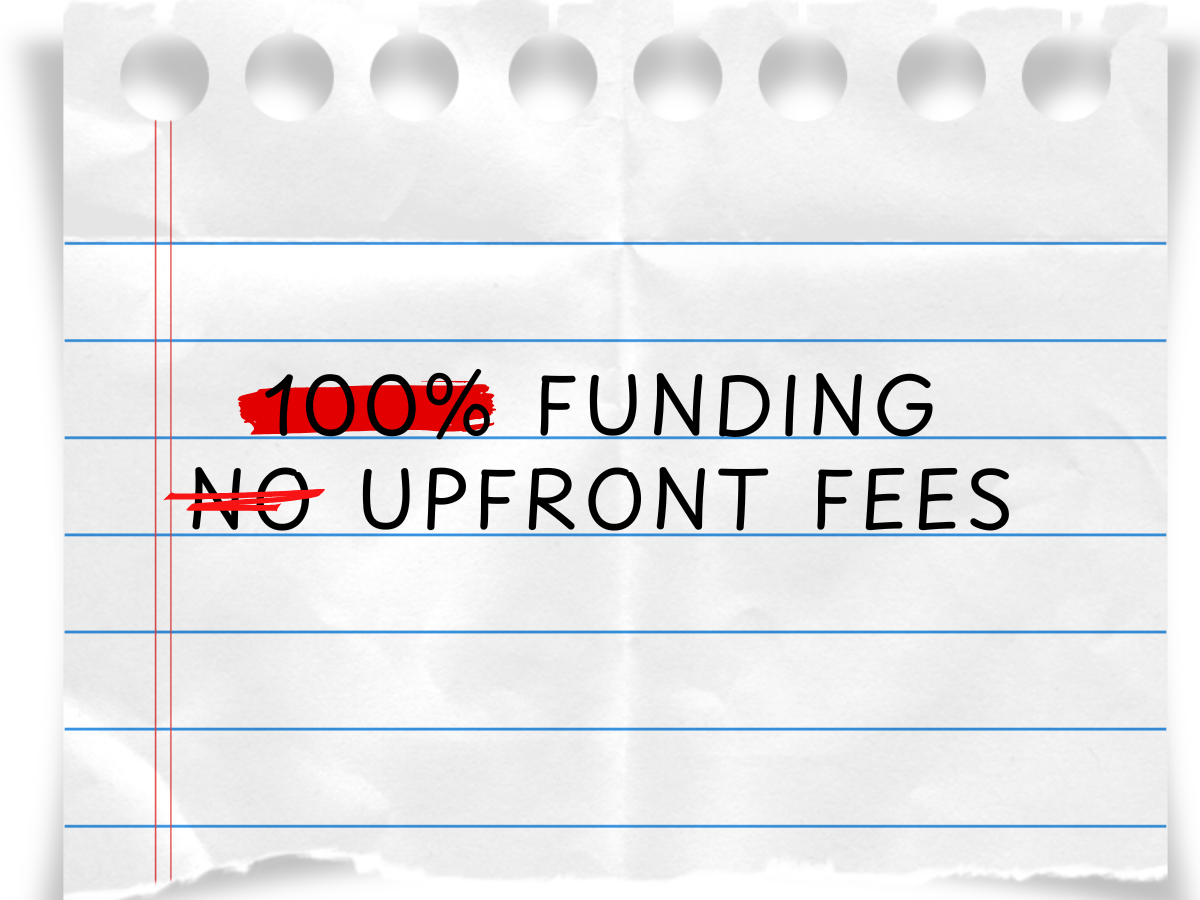
Page Contents
Understanding Project Finance Costs: Securing project finance involves due diligence, structuring, and closing costs, which project owners must account for.
Debunking the “100% Project Funding” Myth: 100% funding does not mean free money; lenders require risk assessment, due diligence, and financial structuring
How Leveraged Finance Works: Project finance is primarily debt-driven, structured based on viability and cash flow, without using the project itself as collateral.
When seeking large-scale project finance, one of the most common concerns from project owners is whether there are any upfront fees. Questions like:
- “Are there any upfront fees?”
- “We will not accept any upfront fees.”
- “We only want 100% project funding with no upfront cost.”
These concerns stem from misconceptions about how private debt project finance works. This article clarifies the typical costs incurred during the structuring and financial close stages of project finance to set the right expectations for project owners.

Are There Any Upfront Fees?
Unlike some “100% project funding” models that require prepayment of large financing packages, AltFin does not charge upfront fees for intake. However, securing project finance involves various costs at different stages of the process. These costs are typically linked to legal, technical, and financial due diligence—elements that every serious lender requires before financing can be disbursed.
While project owners do not need to pay large “pay-to-play” fees, they should be prepared for structuring and closing costs that arise when moving forward with a financing deal.
Costs Arising During Structuring and Financial Close
Due diligence costs (before commitment)
To ensure the project meets the lender’s risk requirements, due diligence is a necessary step. Costs in this phase can include:
- Legal Fees (compliance, contract drafting): $100,000 – $500,000+
- Financial & Technical Due Diligence (risk analysis, feasibility studies): $100,000 – $1,000,000+
- Third-Party Reports (market studies, environmental assessments, engineering reports): $50,000 – $500,000
- Lender’s Site Visit & Advisory Fees (if required): $50,000 – $250,000
These costs vary depending on the complexity of the project and are typically borne by the borrower.1, 2
Commitment & arrangement fees (at financial close)
Once the deal is structured and approved, lenders charge fees to compensate for the arrangement of the loan:
- Arrangement Fee (typically 1-3% of the loan amount):
- For a $250M loan: $2.5M – $7.5M
- For a $1B loan: $10M – $30M
- Commitment Fee (on undrawn loan amount, if applicable): 0.25% – 1% per annum
- Loan Structuring Fee (varies by lender): $100,000 – $1,000,000+
These fees are usually deducted at financial close rather than paid in advance.3
Other transaction costs (closing costs)
In addition to arrangement fees, other transaction-related costs can arise:
- Banking Fees & Compliance Costs: $50,000 – $250,000
- SPV Setup (if required): $100,000 – $500,000
- Insurance & Bonding (if required): $100,000 – $5,000,000+
- Legal Closing Costs (final documentation, escrow): $250,000 – $1,000,000+
These costs ensure a smooth transaction and protect both the borrower and lender.
What About “100% of the Capital Stack”?
Many project owners confuse “100% project funding” with “100% of the capital stack.” However, they are not the same.
What is the capital stack?
The capital stack refers to the layers of financing in a project, typically including:
- Senior Debt – Primary loan from banks or institutional lenders.
- Mezzanine Debt – Higher-risk debt, often used to reduce the equity requirement.
- Equity – Capital provided by the project sponsor or investors.
- Grants/Subsidies – Government incentives or tax credits.4
How does this relate to project finance?
- Project finance is primarily debt-driven but usually requires some equity.
- 100% of the capital stack does not mean free money—even high-leverage structures require due diligence and transaction costs.
- Leveraged finance structures can minimize equity contributions but do not eliminate costs altogether.

How We Structure Project Finance
AltFin connects project owners with lenders specializing in leveraged finance,5 meaning most of the capital stack is covered through debt rather than equity. This allows for:
- Higher debt-to-equity ratios, reducing the borrower’s upfront capital contribution.
- Structured solutions to cover equity gaps, such as subordinated debt.
- Non-recourse financing, where repayment comes from project cash flow rather than corporate guarantees.
However, our lender does not accept the project as collateral. Instead, financing is structured based on project viability, risk assessment, and financial performance.
Conclusion
By understanding these costs, project owners can better prepare for the realities of securing project finance and avoid unrealistic expectations that can delay or derail financing opportunities. For instant estimates tailored to your project, use our Project Finance Cost Calculator.
REFERENCES:
- Investopedia, Commitment Fee Explanation, retrieved from https://www.investopedia.com/terms/c/commitmentfee.asp
- CFI, Due Diligence in Project Finance, retrieved from https://corporatefinanceinstitute.com/resources/valuation/due-diligence-project-finance/
- Exim, Fees for Project Finance, retrieved from https://www.exim.gov/solutions/project-and-structured-finance/fees-for-project-finance
- J.P. Morgan Chase, Understanding the real estate capital stack, retrieved from https://www.jpmorgan.com/insights/real-estate/commercial-term-lending/what-is-a-capital-stack-in-real-estate, https://www.jpmorgan.com/insights/real-estate/commercial-term-lending/what-is-a-capital-stack-in-real-estate
- CFI, Leveraged Finance Overview, retrieved from https://corporatefinanceinstitute.com/resources/commercial-lending/what-is-leveraged-finance/
KEY TERMS:
- Upfront fees are part of borrowing costs (IFRS accounting standards).
- Total project cost (TPC) includes capital and financing costs.
- Cost of capital (WACC) represents the blended rate a company pays to finance its projects through both debt and equity.
